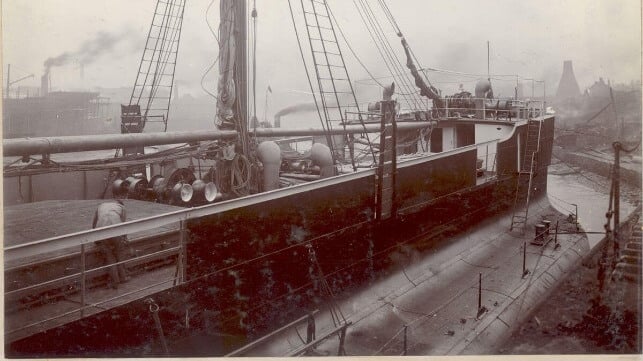Cargo Ship Lost in WWI Found During UK Wind Farm Survey

Teams working on the geological surveys for a planned floating offshore wind farm to be located off the northeast coast of Scotland are reporting an “added bonus” from their work. They believe they located the wreck of a WWI-era cargo ship in remarkably good condition 107 years after it was torpedoed in the “Great War.”
The first of several offshore surveys commenced in 2023 for a geotechnical investigation to gather soil and geotechnical data for developing an engineering ground model for the wind farm which will be located approximately 50 miles off the Scottish coast floating in the North Sea. Known as Marram Wind, the project is being developed in a partnership between ScottishPower and Shell. It has a proposed generating capacity of 3GW.
“We always expect to come across wrecks when carrying out works like this, but these tend to be smaller vessels and known to the authorities,” said Colin Anderson, Development Manager for MarramWind. “This really is an extraordinary find, given that our seabed surveys – which give us vital information about seabed conditions and what that means for the development of MarramWind – covered a distance of around 6,000 miles.”
Among the several discoveries during the survey work, they located a wreck which has been identified as the Tobol, a Russan-flagged merchant ship that was torpedoed by a German U-boat on September 11, 1917.
Built in 1901 by a shipyard in Sunderland near Newcastle upon Type, a famous shipbuilding district, she was first known as the Cheltenham. She was 3,700 tons and measured 100 meters (328 feet) in length. Helping the teams to identify the ship, she had a distinctive look with a “turret deck” design.
Historians report the vessel had an unusual career, as she was captured by the Russian Navy in 1904 and transferred into the Russian Imperial Navy which renamed her Tobol. In 1916, she was passed to the Russian Volunteer Fleet and records show she was sailing from Blyth, a port in the north of England, bound for Arkhangelsk, Russia.
“This discovery of a small – but important – piece of a collective national jigsaw puzzle of marine heritage, speaks not only to the global nature of international commerce and alliances in the early 20th century, but also to the interconnectedness and competitiveness of national interests at the time, something still relevant today,” said Toby Gane, Marine and Coastal Cultural Heritage and Archaeology Lead for WSP. “It’s incredible that – more than a century on – we finally have a sense of where the SS Tobol likely went down thanks to MarramWind.”
The company reports an exclusion zone was established around the wreck and relevant authorities including the UK Hydrographic Office and Historic Environment Scotland have been notified of the find. Discussions are ongoing to establish a long-term archaeological exclusion zone to ensure the wreck of the SS Tobol is protected and preserved.
